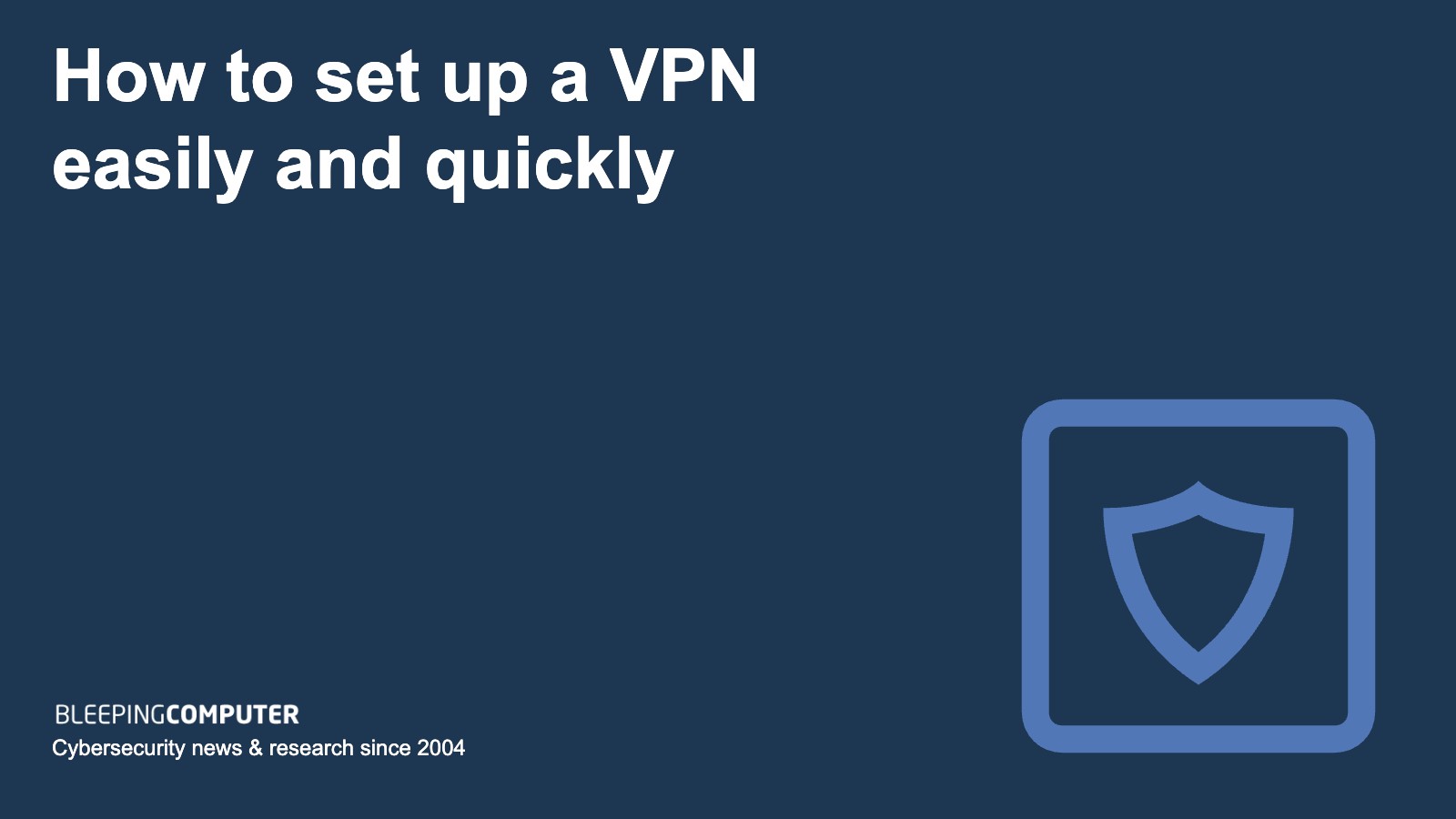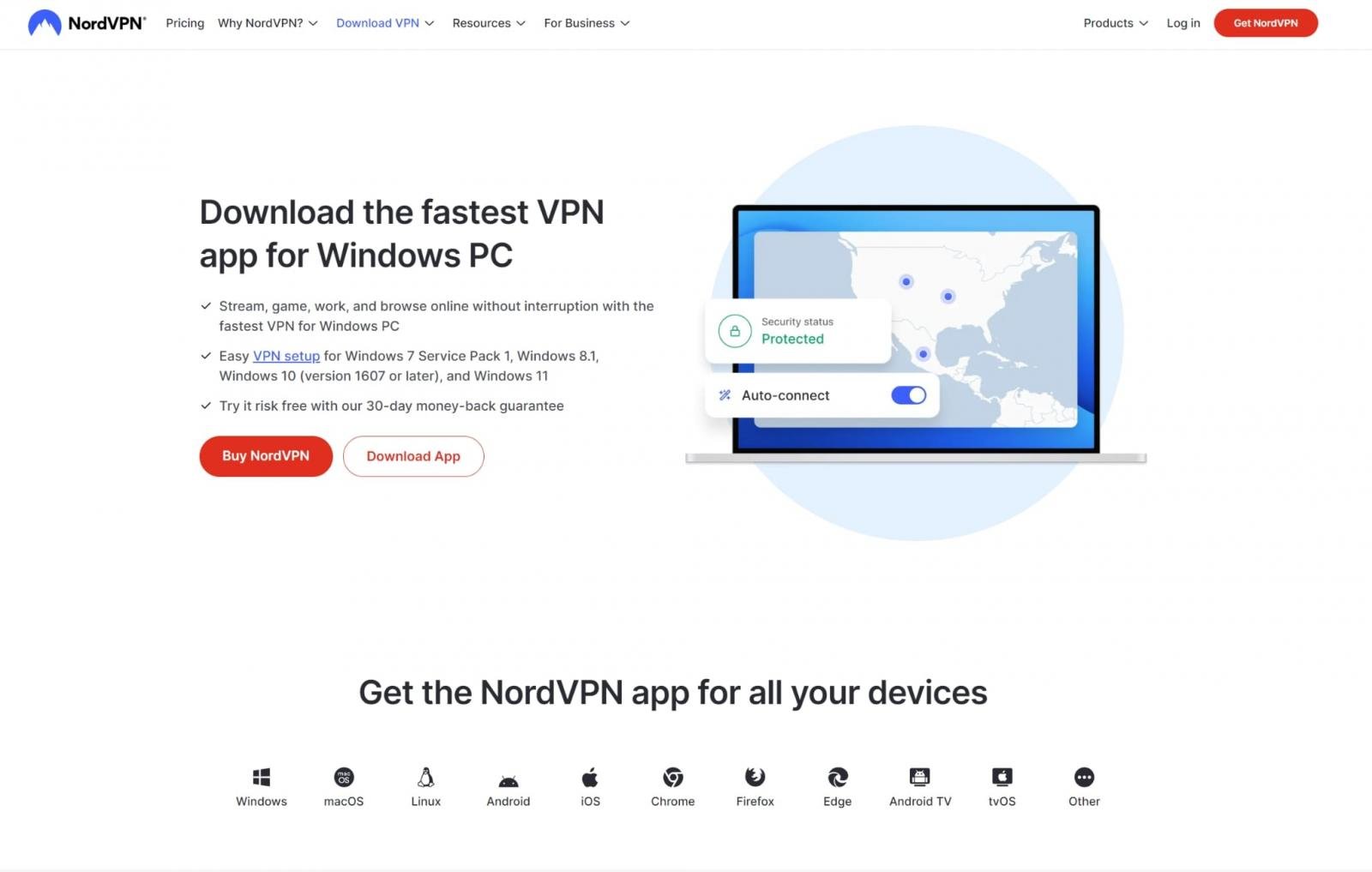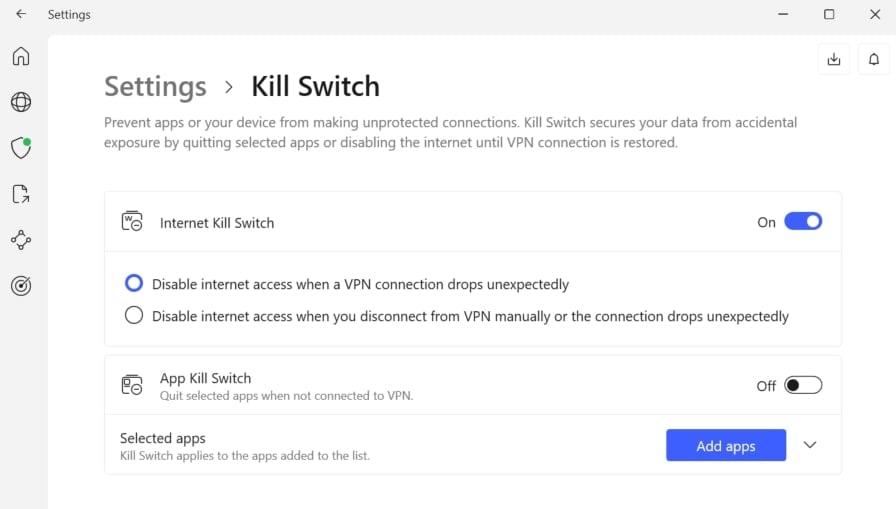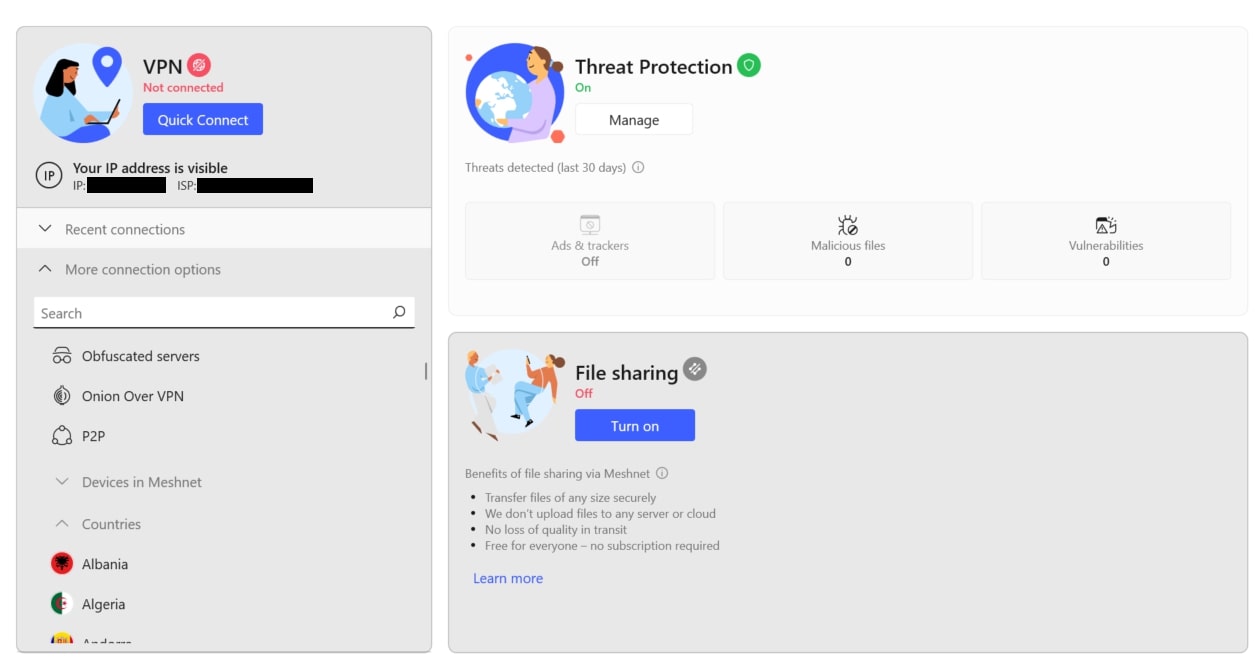Looking to start using a VPN? We’ll guide you through the process of setting up a VPN so you can browse safely and access your favorite sites from anywhere in the world.
Installing a Virtual Private Network (VPN) is a great way to step up your online privacy. They essentially allow users to sidestep digital censorship, web-filtering systems, and regional restrictions while keeping their activities hidden from hotspot owners and their ISP. However, these are fairly complex systems and getting started isn’t always easy.
There’s no need to worry. Our experts have put together a comprehensive guide to choosing, installing, and configuring your first VPN so you can spend less time reading support documentation and more time doing what you love.
This post was designed with beginners in mind, so we’ll be avoiding jargon as much as possible and explaining what each feature does in simple, easy-to-understand terms. With that out of the way, let’s begin!
Getting connected to a VPN: Quick-start guide
Short on time? Not a problem. Follow these steps to start using a VPN as quickly as possible:
- Before anything else, you’ll have to sign up for a reputable VPN service. We recommend NordVPN – it’s highly versatile, barely has any impact on your speed, and offers a wide range of security tools. Surfshark and ExpressVPN are great alternatives.
- Visit your provider’s website and download the appropriate version of the app for the device you’re trying to protect.
- Install the VPN app and log in.
- Go into the settings menu and make sure that DNS leak protection and the kill switch are enabled. If your VPN has built-in ad or tracker-blocking, activate this too.
- Pick a server in your desired location. If you just want to enhance your online security, the location doesn’t really matter. On the other hand, users looking to watch TV will need a server in a country where their preferred streaming service is available.
- All that’s left is to get connected. There’ll almost always be a power button (or something marked ”Connect”) on the main page. Click this, wait a few seconds, and the screen should update to let you know that everything is working properly.
- If you run into any difficulties, try a few other servers. You may also want to change protocol in the settings menu to see if that helps. The good news is that most major VPN providers offer 24/7 assistance over live chat. In our experience, staff are generally responsive, knowledgeable, and happy to spend as long as it takes to resolve problems.
WANT TO TRY THE TOP VPN RISK FREE?
NordVPN is offering a fully-featured risk-free 30-day trial if you sign up at this page . You can use the VPN rated #1 with no restrictions for a month – great if you want to binge your favorite show or are going on a short trip.
There are no hidden terms – just contact support within 30 days if you decide NordVPN isn’t right for you and you’ll get a full refund. Start your NordVPN trial here .
First steps: Choosing a suitable VPN
With hundreds of different VPNs on the market, picking one was never going to be simple. That said, we have a few tips to help you choose the best VPN for your needs.
Firstly, try to avoid free services. These almost always have monthly bandwidth limits, small networks, and poor streaming capabilities. Additionally, they’ll often insert ads into the sites you visit.
Paid VPNs, on the other hand, let you browse as much as you like and frequently include tools designed to improve your online experience, such as ad and tracker-blocking, streaming-optimized servers, or stealth modes. Besides, most paid VPNs offer a money-back guarantee, so you can always get a refund if the service isn’t right for you.
Think about how you intend to use the VPN. If security is your top priority, look for services with independently verified privacy policies and advanced features like automatic obfuscation.
If you’re more interested in watching TV, you’ll want a provider with lots of server locations that’s capable of side-stepping VPN detection systems. Perhaps you just want to remain anonymous while torrenting; in that case, we’d recommend a service with P2P-optimized servers and higher-than-average speeds.
Initial setup
Once you’ve decided which VPN you’d like to use, it’s time to get registered. Most providers will have an overview of their latest deal and a large “sign up” button somewhere on the homepage. Simply choose your desired subscription length, create an account, and complete the checkout process. Afterwards, you’ll be prompted to download one of the VPN’s apps.

Install and open the app. Then, enter the username and password used during registration. Some providers will take you straight to the VPN’s dashboard, although it’s becoming increasingly common for them to include additional security measures. For instance, you may have to click a link in an email to verify that it’s really you trying to log in.

Before we connect, let’s spend a couple of minutes making sure that you’re as safe as possible. Open up the settings menu (often represented by a gear icon) and verify that DNS and IPv6 leak protection are enabled. We also strongly recommend turning on the kill switch, as this prevents you from inadvertently browsing the internet unprotected should your connection drop.
Your VPN may also offer ad and tracker-blocking features – it’s usually a good idea to turn these on, though they may cause issues with certain sites.
Deciding which server to use
It’s not uncommon for a VPN to offer thousands of servers all over the world. How, then, are you supposed to decide which to use?
We recommend thinking about what you want to do. If you’re only interested in enhancing your online privacy, any server will work (although you’ll usually get the best performance from one that’s close to your actual location).
If you’d like to access region-locked platforms, however, you’ll need a server in a location where that service is available. For example, you’d use an American server to access US-only services like Hulu abroad.
You may even find that your VPN separates its server list into multiple categories. NordVPN, for instance, offers specially-optimized servers for torrenting, accessing the dark web, and bypassing censorship.
Be aware that enhanced-privacy servers are generally a little slower than general-purpose ones – they’re great if you’re in a country with strict online censorship but may not be the best choice for day-to-day browsing.

Once you’ve chosen a server, return to the VPN’s main page. Now, just click the connect button, and after a few seconds, you should be connected. The screen will update (often turning green or displaying your new IP address), letting you know that everything is working as expected.
Protecting devices that don’t support VPN apps
Generally, consumer VPNs tend to have apps for iOS, Android, macOS, and Windows. Some also provide command line-based installers for Linux systems or their own Amazon Fire TV apps. What if you’re looking to secure traffic from a smart TV, games console, or other device that doesn’t offer VPN support as standard? In that case, your best bet is to install the VPN directly on your router.
This is a little more complicated than simply installing an app, but the benefits are well worth it. Routers only count as a single connection but will protect every device on your network. Better still, you won’t have to manually configure each individually – so long as the WiFi details are correct, each device will start using the encrypted connection automatically.
Most major VPNs provide step-by-step setup instructions for routers on their website support section. If you can’t find them (or if your router doesn’t seem to be supported), contact customer support. The staff likely deal with this exact problem every day and will be more than happy to help.
Some VPNs also offer smart DNS services. These essentially change your device’s location without requiring you to install an app; all you have to do is change the DNS settings in the network options menu. However, your traffic won’t be encrypted and you usually can’t switch locations – it’s a US IP address or nothing.
How to troubleshoot common problems
If you run into difficulty, don’t panic. VPNs are fairly complex pieces of software which means there are lots of things that could potentially interfere and cause issues.
In our experience, there’s usually a quick and painless solution; below, we’ll explore a few of the most common VPN problems people face and explain how to resolve them.
I can’t connect to the VPN
Whenever you’re having trouble connecting to the VPN, your first response should always be to try a different server. It’s always possible that the one you’re trying to use is temporarily down for maintenance or incompatible with your chosen connection protocol. If you can’t connect to any server, however, this points to a larger issue.
Start by checking whether you’re actually connected to the internet. This seems obvious but you’d be surprised how often it gets overlooked! Next, make sure you’re actually logged in, your VPN subscription is active, and you’re using the most up-to-date version of the app.
If none of this helps, it’s possible that either your network or your ISP are actively blocking VPN traffic. Try switching to a different protocol, activating the VPN’s stealth mode, or using an obfuscated server to see if this helps. Alternatively, ask your VPN’s customer support staff for advice – they’re used to dealing with this kind of thing and will be more than happy to help.
I can’t use certain sites with a VPN active
You know how some websites can detect that you’re using an ad-blocker? It’s also possible to tell if you’re using a VPN. Sites like Netflix can analyze your traffic, check your IP address against a list of known VPN servers, or see if there’s a mismatch between your IP address location and the location cookie stored on your device.
The good news is that VPN providers have invested huge amounts of time into getting around these limitations. Some have their own anti-censorship protocols, stealth modes, or tracker-blocking tools designed to help thwart VPN-detection systems.
We’d recommend trying these out, switching to a server in a capital city, or seeing if there’s a specific server optimized for the site you’re trying to access.
Websites are still detecting my real location
If websites don’t seem to acknowledge your server’s location, one of two things is happening. Either it’s able to see your original IP address (which shouldn’t be possible, provided you’ve configured the VPN properly) or it’s relying on old location data.
Your best bet is to consult an IP address checker to make sure that your connection is working properly, then clear your browser’s cookies and cache. This will force websites to reacquire your location, which should hopefully now point to the correct country.
Setting up a VPN FAQs
Can I get into trouble for using a VPN?
VPNs are completely legal everywhere in the world, except for a handful of countries that restrict which providers you’re allowed to use. China and Russia, for instance, require VPN providers to be approved by the government. Those that aren’t approved generally have their websites blocked.
It’s worth mentioning, however, that these countries are known for their wide-reaching digital censorship and history of human rights abuses. We’d suggest thinking carefully about whether you can really trust state-approved VPNs, though; such governments are unlikely to really allow activists and journalists to use the internet anonymously.
Disclaimer: We’ve thoroughly researched this topic but our team are not legal experts. In other words, nothing we’ve said above should be taken as legal advice. If you’re not sure whether VPNs are legal in your country, we encourage you to study local laws and possibly even consult a professional before attempting to use one.
Are VPNs really necessary?
Not everyone will need a VPN but they are useful tools to have at your disposal. Their encryption protects your online activities from prying eyes, drastically improving your security on public networks and making ISP throttling much less likely.
They also hide your real IP address which can help you torrent or play online games without revealing your location to other users.
On that note, VPNs make it easy to spoof your country of origin. That’s helpful for anyone interested in regaining access to their favorite streaming platforms while on vacation abroad, or switching regions in games that don’t normally allow this.
How do I know my VPN is as secure as it claims?
We’ve seen plenty of less-reputable providers claim that they’re the most secure VPN on the market. Despite this, many keep detailed logs of your activities and use substandard encryption (if any).
To make sure your traffic is properly secured, we recommend taking a close look at the service’s security tools and privacy policy before signing up. Here’s a brief rundown of features that should be non-negotiable to any privacy-conscious user:
- Support for industry-approved, open-source protocols like WireGuard or OpenVPN.
- Encryption that is currently considered uncrackable. Most major VPNs use 256-bit AES or ChaCha20 encryption. If a service is unwilling to tell you what kind of encryption it’s using, that’s a huge red flag.
- A privacy policy that prioritizes the user. Aggregated data or limited connection logs are fine, but it’s a good idea to avoid services which record your source IP address or keep tabs on the sites you visit.
- A history of transparency. Ideally, your VPN will have been audited by an independent third party and will freely admit when it’s having difficulty with certain tasks.
- Anonymous payment methods. These ensure you don’t have to provide personal information when signing up. Cryptocurrency is the most common way to pay anonymously but some services also accept cash, gift cards, and even jars of honey.
- Tools designed to protect you when things go wrong. If your VPN doesn’t have a kill switch and can’t stop IPv6 or DNS leaks, it’s not worth using.
Will a VPN slow down my internet speeds?
Encrypting and decrypting traffic takes time. Additionally, VPNs add an extra step to the path your data takes across the internet, so there will always be some degree of slowdown. That said, this is much less of an issue than it used to be.
Providers have dedicated huge amounts of energy to optimizing their networks, adding support for faster connection protocols like WireGuard and minimizing latency. This means that unless your connection is already extremely slow, you likely won’t notice a significant speed difference when using a VPN.

Did you know
The following information is available to any site you visit:
Your IP Address:
Your Location:
Your Internet Provider:
BLEEPINGCOMPUTER RECOMMENDS:
Using a VPN will hide these details and protect your privacy. We recommend using NordVPN – #1 VPN in our tests. It offers outstanding privacy features and is currently available with three months extra free.